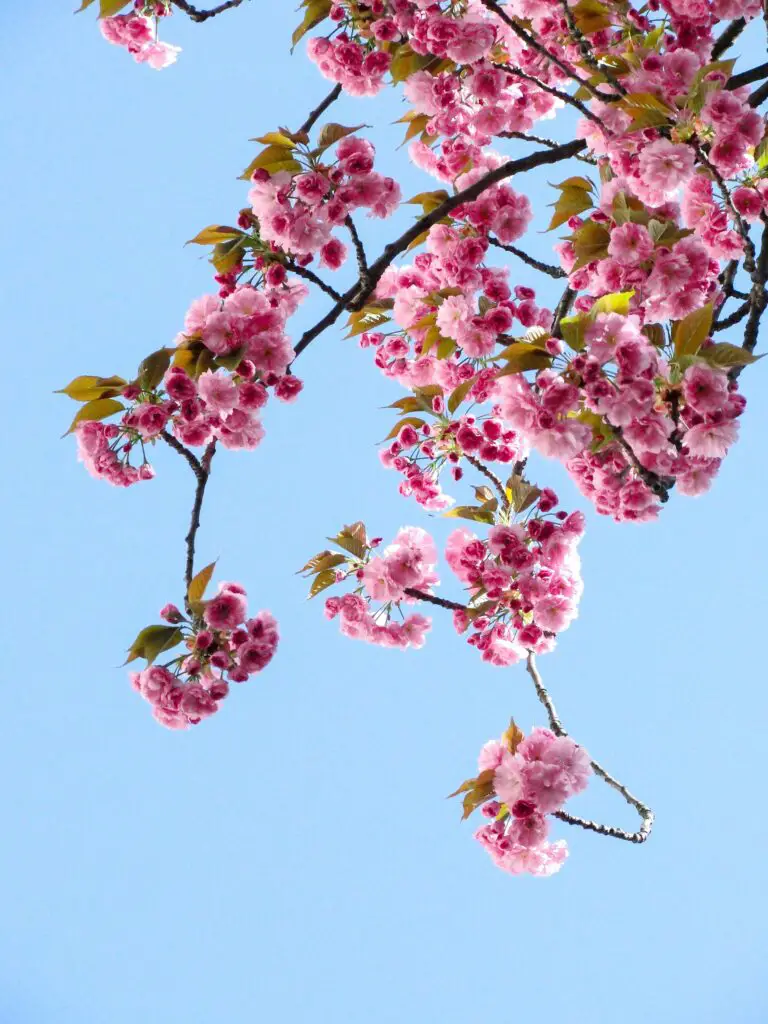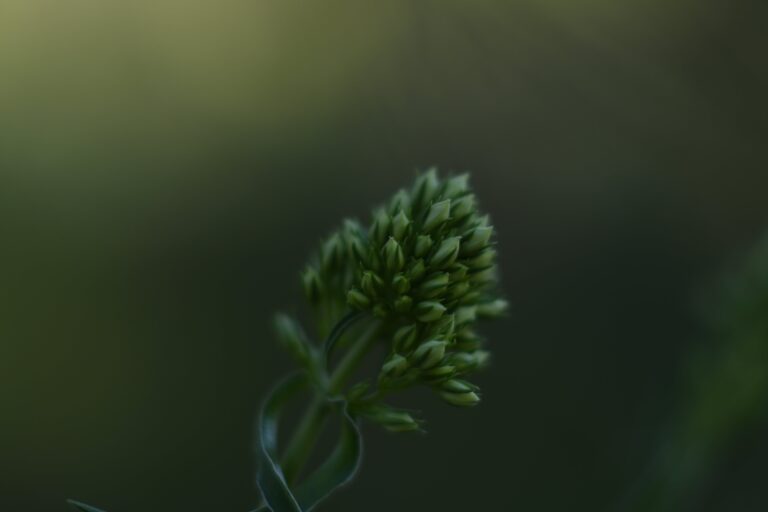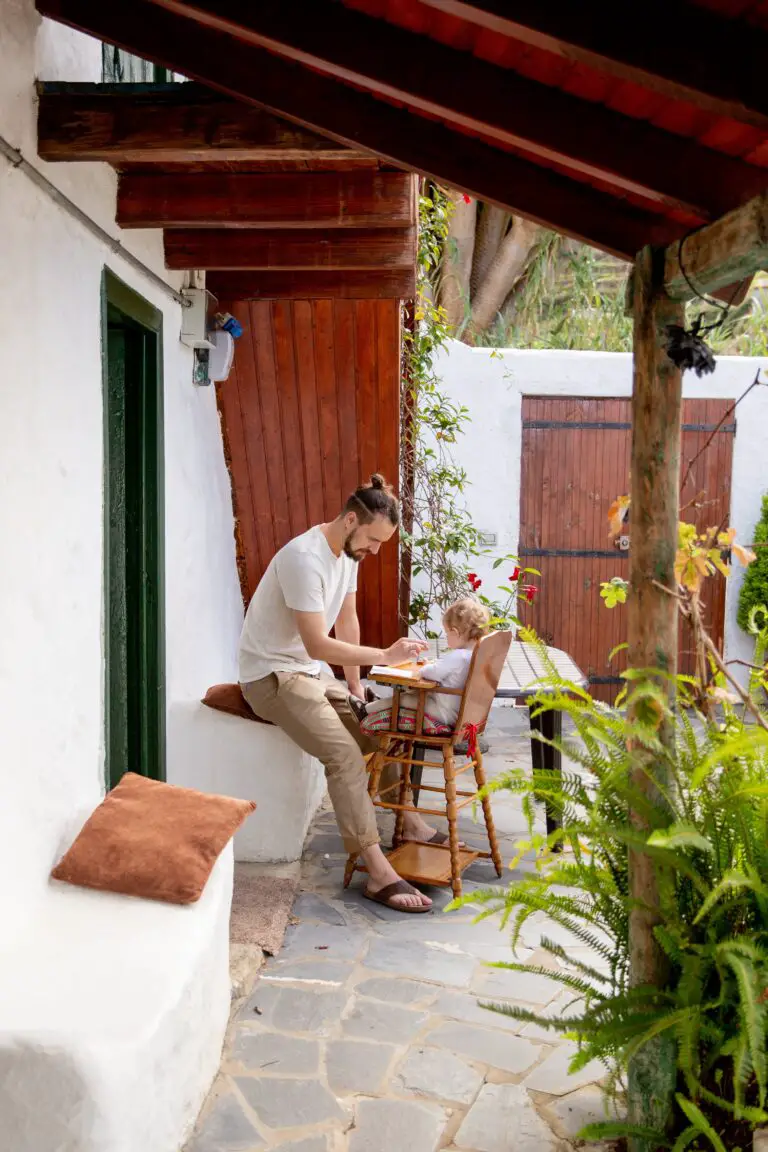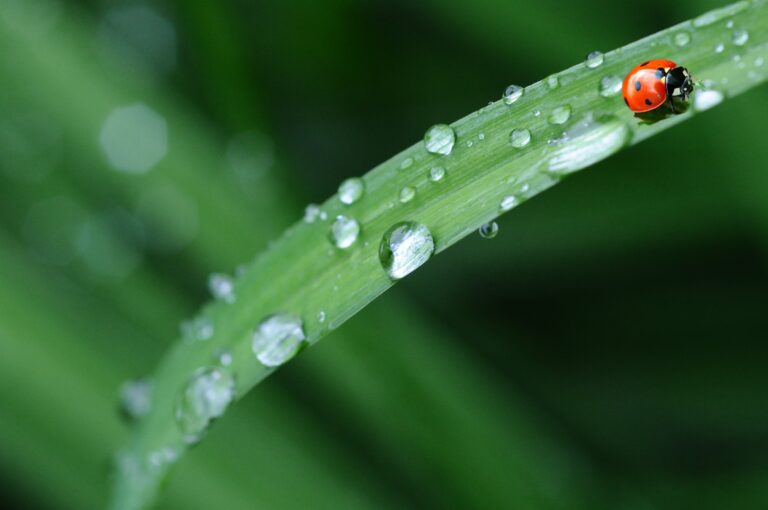Introduction to Transplanting Sedum
Are you eyeing that clump of sedum in your garden and thinking it’s time to give it a new home? Maybe you’ve noticed it’s not soaking up the sun like it used to, or perhaps there’s a corner in your garden you know it would totally jazz up. Whatever the reason, spring is the perfect time to get down and dirty with transplanting your sedum. It’s like sedum’s own version of spring cleaning!
Let’s be real—spring brings with it that sense of renewal, and your plants feel it too. Transplanting sedum in spring capitalizes on the plant’s built-in zest for new beginnings. They’re waking up from their winter nap, stretching their roots, and gearing up for a season of growth. By transplanting in spring, you’re syncing up with their natural cycle, giving them the best shot at settling in snugly in their new spot.

Imagine this: the frost has bid farewell, and your garden is a blank canvas. You spot your sedum, ripe for relocation, and it’s like they’re begging for a change of scenery. You’re not just moving a plant; you’re giving it a front-row seat to spring’s grand opening. Thanks to more moderate temperatures and frequent spring showers, your transplanted sedum will hardly break a sweat adjusting to its new locale. You’ll see it reach new heights, unfurling leaves that look like they’re high-fiving you for the move!
Bonus points for transplanting your sedum in spring come from Mother Nature herself. With the soil just right, not too cold or hot, and damp with spring’s embrace, roots find their groove faster. Plus, if you’re looking to avoid the drama of transplant shock, spring’s the time, as the cozy conditions help keep your sedum’s stress levels low. And who doesn’t want a happy, stress-free sedum?
To get the dirt on best practices for transplanting these sturdy charmers, check out this guide packed with all the know-how you’ll need. It’s like having a plant whisperer in your pocket!
There you have it—spring’s got the green light for giving your sedum a new patch of earth to call home. It’s a win-win season for both you and your leafy friends. Get ready to play matchmaker between sedum and soil because it’s time for a garden glow-up!
Understanding the Sedum Lifecycle
Let’s dig into the lifecycle of sedum, shall we? Picture this: it’s the onset of spring, and your garden sedum, let’s call her Stella, is just starting to shake off the chill of winter. She’s eager to stretch out her roots and show off her fresh, verdant foliage. And like Stella, sedum plants go through a remarkable journey through the seasons that dictates the best moments to give them a new home in your garden.
Stella starts her year with a bit of a sleepy awakening in early spring. It’s the perfect time for those green thumbs out there to spot new growth on their sedums. The stems push up, reaching for the sun, and tiny leaves begin to unfurl like nature’s green flags signaling the start of the growing season. This burst of activity is the sedum’s vegetative stage, and it’s a sign that they’re kicking into high gear.
As the days warm up, our friend Stella starts to strut her stuff with thicker foliage and stronger stems. Come summer, she’s the belle of the ball, dressed in tight clusters of star-shaped blossoms, attracting every bee and butterfly in the neighborhood. From summer to early fall, sedums show their true colors – it’s their reproductive stage when they’re all about getting those blooms out there for the big pollinator party. But it’s not just a pretty face; this stage is a buffet for those helpful garden critters, making sedums a win-win for garden biodiversity.
So why is spring the golden ticket for moving Stella around your garden? Well, transplanting during the vegetative growth phase means Stella and her sedum pals are packed with energy reserves and ready to settle into a new spot without missing a beat. Plus, the moist spring soil makes it easy for their roots to cozy up and expand in their new digs. Smart gardeners like you know it’s all about giving them a head start before the summer heat waves arrive!
Let’s not forget to mention—sedums are tough cookies. Move them in spring, and they’ll bounce back faster than an acrobat on a trampoline. But just to be sure Stella thrives, check out these thriving tips for lush succulent gardens. After all, a move can be stressful, even for a plant!

So there you have it—knowing your sedum’s lifecycle is like having the secret garden playbook. With springtime’s gentle temperatures, buoyant growth, and a soil bed softer than your favorite pillow, it’s prime time for sedum transplanting success. Just remember, Stella and her sedum siblings are counting on you to choose the right moment, and spring is your green-light season!
Benefits of Spring Transplants for Sedum
Sedum, a reliable and hardy perennial, genuinely thrives when given a fresh start in the spring. But why spring? It’s as if nature itself rolls out the green carpet, creating the perfect conditions for transplanting sedum. Let’s dig into the earth of possibilities that spring offers to our succulent friends!
First off, spring showers are more than just a muse for poets; they are a gardener’s best ally. The consistent moisture of spring ensures that newly transplanted sedum can establish roots without the stress of dry spells. Plus, the milder temperatures allow sedum to acclimatize to their new home without the shock of extreme weather—a real-life game changer borrowed straight from nature’s playbook!
Imagine the tranquil morning dew and the gentle warmth of spring sun. These elements conspire together, offering a prime growing season for sedum. The moderate spring climate coaxes the roots to spread out, claiming their new territory in the soil. And when roots are happy, we get a spectacle of growth above ground that’s nothing short of remarkable!
Spring transplanting also puts sedum in the lead for the season’s growth race. When you transfer these plants in spring, they’re not just surviving; they’re set to thrive. Free from the grip of summer heat or autumn chills, sedum can focus all its energy on growing upwards and outwards, setting the stage for a lush and vibrant garden.
Done just right, transplanting sedum during this season can feel like you’ve unlocked a secret level in gardening. And for those ambitious gardeners looking for a bit of insider knowledge, check out this detailed guide on cultivating Crassula, another plucky member of the succulent family.
But let’s not forget the most compelling spring advantage: the extended dance of growth and bloom. Transplanting sedum in spring means witnessing first-hand the unfurling of plump leaves and, eventually, the grand finale of blossoms. It’s a garden performance you wouldn’t want to miss – and it all starts with spring transplanting.
Now, as the spring whispers its green secrets, imagine transplanting sedum in your own garden. It’s a time ripe with potential and bursting with life—an opportunity for your garden to become a living masterpiece stamped with your unique touch.

Key Steps to Successfully Transplanting Sedum in Spring
Welcome to the world of sedums, where timing is essential and spring marks the perfect moment for transplanting! Let’s roll up our sleeves and dig into the nitty-gritty of effortlessly relocating your resilient sedum plants. With this step-by-step guide, you’ll have your sedum settled into their new home in no time, and they’ll be thanking you with luscious growth and vibrant blooms.
Step 1: Preparing for the Big Move
Before you bring out the garden tools, make sure you’ve got everything lined up for success. Start by choosing the ideal day—a slightly cloudy one works wonders to prevent your sedums from wilting. Next, gather your supplies: a good shovel, some garden gloves, and a touch of enthusiasm. It’s also a smart move to prep the new location in advance. Loosen the soil, mix in some compost for a nutrient boost, and make sure it’s free-draining—sedums adore a good drainage situation!
Step 2: Digging Up with Care
Now for the delicately mighty task of unearthing your sedum. Gently circle around the plant with a shovel, giving it a wide berth to safeguard those precious roots. Aim to lift the root ball and surrounding soil in one piece—think of it as a comfy soil nest for your plant’s journey to its new plot.
Step 3: Dividing the Bounty
If your sedum has outgrown its space, now is the perfect time to multiply your garden’s charm. Carefully divide the plant into smaller sections, each with a generous share of roots and shoots. It’s like hosting a plant party and sending each guest home with a delightful goody bag of roots! Check our article on Sedum Lime Zinger: Vibrancy in Your Garden Space for insights into maximizing the potential of these divisions.
Step 4: Replanting and Welcoming Home
Make a welcoming hole in the prepped location, echoing the size of the root nest. Plant each sedum division at the same depth it was previously at—like setting the right seat height on a new bicycle. This familiar depth gives your plant the confidence to thrive. Give them a good soak, a cheer for new beginnings, and watch as they grasp the soil with newfound enthusiasm.

Remember, the best actions are grounded in knowledge and patience. By following these steps, you’re not just transplanting; you’re granting your sedum a new lease on life under the gentle spring sun. Give them a little time, and soon you’ll witness your garden become an oasis of flourishing sedums swaying in the breeze, their colors nodding in gratitude for the care you’ve showered upon them.
Caring for Sedum After Transplant
Now that you’ve given your sedum a new home, it’s crucial to get it back on track to thrive! A gentle touch and the right care are your tools for helping your newly transplanted sedum become the garden’s pride. Let’s dive into the essentials of post-relocation care.
Quenching Thirst the Right Way
Freshly transplanted sedum will be quite thirsty, but how much water is too much? Think of it like serving a perfect cup of tea – adequate but not over the top. Keep the soil consistently moist for the first few weeks after transplanting. A good rule of ‘green thumb’ is to water whenever the top inch of soil feels dry to the touch. As your sedum settles in, you can taper off to normal watering schedules.
Sunlight: The Best Kind of Spotlight
Sunlight is the stage on which sedum performs its best. After an encore in a new location, make sure it continues to bask in the glory of full to partial sun. Aim for about 4 to 6 hours of direct sunlight daily, akin to ensuring a talented performer is never in the shadows for too long.
General TLC for Your Green Buddy
Just like a loyal companion, your sedum needs regular checks and comfort. Keep an eye out for leaves that look unhappy or soil that seems out of tune. The post-transplant period is like adjusting to a new neighborhood for your plant – it’ll need time to acclimatize. With careful observation and some tender loving care, your sedum can go from being the ‘new plant on the block’ to the lush, enviable succulent everyone admires.

Troubleshooting Common Issues After Transplanting
Once you’ve completed the spring transplant of your sedum, it’s like sending your kids off to college; you’ve done your best, and now you hope they thrive in their new environment. But just like with college freshmen, sometimes things don’t go exactly as planned. Your sedum might throw a tantrum or two, showing signs of stress or displeasure. But fear not, green thumbs! Let’s dive into some post-transplant scenarios and arm you with the know-how to keep your plant babies on the straight and narrow.
“Help, My Sedum’s Leaves Look Sadder Than a Country Song!”
Wilting leaves post-transplant? A classic case of sedum blues. It’s likely your succulent sidekick is experiencing transplant shock. Give it a couple of days to adjust, and resist the urge to helicopter-parent with too much water. Instead, ensure it’s in a sunny spot and the soil drains faster than a teenager’s bank account.
“It’s Dropping Leaves Like It’s Autumn, But It’s Not!”
Leaf drop is the sedum’s equivalent of dropping the mic—it’s making a statement. It could be signalling that it’s in water over its head—literally. Double-check that your irrigation routine hasn’t turned into a saga of soggy sorrows. Aim for a “less is more” watering approach, reminding yourself that these succulents are the camels of the plant world.
“My Sedum Looks Paler Than My Winter Complexion!”
If your sedum’s colour is as washed out as last season’s jeans, it might be crying out for sunlight. These sun-worshippers need a good dose of UV rays to maintain their vibrant hues. Relocate them to a spot where they can bask in the glory of the sun for at least four to six hours a day, but not under the scorching midday sun, where they might get a sunburn, reminiscent of a day at the beach without sunscreen.
Watch this video to glean more insights on nurturing your Sedum adolphii post-transplant:
“I Transplanted My Sedum, And Now It’s Spreading Faster Than a Gossip!”
Is your sedum spreading like wildfire? That’s not necessarily a bad thing! These robust succulents have a penchant for expansion, which is great news for gardeners looking to fill in gaps. But if you’re aiming for a more structured garden narrative, set some boundaries—consider installing edging or dividing the plants to share with envious neighbours.
Remember, just like people, plants need time to settle into a new routine and environment after a move. By paying attention to these common issues and applying these troubleshoot tips, you can ensure that your sedum thrives after its spring relocation. Patience and a little extra TLC go a long way in helping your sedum adjust to its new home.
Additional Tips and Best Practices
So you’ve decided it’s time to give your sedum a new home in the garden this spring. Smart move! But before you start digging, let’s set you up for success. After all, the art of transplanting isn’t just about the move; it’s ensuring your sedum flourishes in its new spot.

First things first: timing is more than just a snappy concept in a fortune cookie; it’s crucial for your sedum’s survival. Try to transplant on an overcast day to avoid immediate sun exposure, which can stress your plants. Imagine being plucked from your cozy bed and dropped onto a sunny beach without acclimating – sounds rough, right? This is how your sedum feels. Let’s be kind and ease them into their new setting.
Next, water the sedum thoroughly the day before the big move. This gives them a hydrating boost: think of it like watering up before running a marathon. On transplant day, dig a generous perimeter around the plant to avoid cutting into the roots. Think of it as giving your sedum a large enough “personal space bubble”—nobody likes their toes stepped on!
How about the post-move care? Well, let’s compare it to a spa day. Give your transplanted sedum some TLC with regular watering to help them settle in. Avoid fertilizers for a while, though; like a heavy meal after a workout, it’s just too much for them to handle right now.
Be on the lookout for transplant shock – it’s like homesickness for plants. Symptoms include wilting or discolored leaves. Don’t panic; it doesn’t mean you’ve failed! Keep caring for your sedum, and they’ll soon adjust to their new surroundings, just like how we adapt to a new neighborhood.
Remember, each plant has its own personality. What worked for your neighbor’s sedum might not be the secret sauce for yours. Keep a keen eye on your plants, and they’ll tell you what they need. With a sprinkle of patience and a dash of attention, your transplanted sedum will soon be the envy of the neighborhood!
Choosing the Right Sedum Varieties for Your Garden
When it comes to elevating your garden with year-round interest and minimal fuss, allow me to turn your attention to the diverse world of sedums. Also known as stonecrops, sedums bring a palette of colors, textures, and forms that can transform any green space. But here’s the kicker: not all sedums are created equal, especially when it’s time to shuffle them around in spring, that perfect window of transplanting opportunity.
Imagine you’re at a garden soirée, and the sedums are the guests—each one brings its own flair. Some dazzle with their frosty blues and succulent leaves, like the ever-popular Sedum ‘Autumn Joy’. This robust plant is your go-to for an effortless shift in the early spring soil. It’s like the life of the party, unfazed by a change in scene, setting down roots with ease and sprouting joyous pink blooms when summer gives a nod.
Then, there’s the low-growing Sedum acre, a ground-hugging sprite of a plant that leaps at the chance to spread its verdant carpet in sun-drenched spots. We’ve seen these troopers bounce back like acrobats after being whisked to new locations in spring. A prime example for gardeners who like to see quick results without any drama!
Concerned about those late frosts that spring loves to toss in just for kicks? Cast those worries aside with frost-toughened varieties like Sedum telephium. These are the sentinels in your garden—the steadfast ones. With their thick, fleshy leaves, they stand guard against the chill, and when transplanted in spring, they establish their posts with military precision.
Let’s take a virtual tour with a seasoned sedum enthusiast. Here’s a video to help you visualize sedum varieties thriving in different settings—and how they might just make your spring transplanting a walk in the park:
Lastly, can we talk about the rising stars? The Sedum spurium ‘Dragon’s Blood’, with its bewitching red foliage, is pacing its way to fame for its transplant tolerance and energetic growth. This sedum takes to new environments like a fish to water—you might find it’s spread its wings even before you’ve had the chance to admire its previous spot!
So, as you can see, choosing the right sedum varieties for transplanting in spring is like curating an art exhibit. It’s all about finding those that not only delight the eyes but also embrace the move with vigor. Go ahead, give these sedum selections a spot in your garden’s springtime saga, and watch them craft their magic as the seasons turn.
Frequently Asked Questions

Spring has sprung, and you’re eyeing your sedum, wondering if it’s time for a change of scenery. You’re not alone! Let’s dig into one of the most common queries gardeners buzz about: Can I transplant sedum in spring?
When is the ideal time to relocate my sedum?
Sedum plants are as tough as old boots, and yes, you can certainly give them a new home in spring! As the earth warms and your garden awakens, sedum’s resilience makes it a fantastic candidate for spring transplantation. Just be sure to get them cozy in their new spot before the heat of summer kicks in.
What steps should I take to ensure a successful transplant?
First off, choose a day when the soil is just right—not too soggy from last night’s rain, but not as dry as grandma’s turkey either. Water your sedum a day before the move, and when it’s go-time, use a sharp spade to cut out a generous root ball. Pop them in their new location, give ’em a good drink, and voilà, they’ll be settling in like they’ve been there for years!
Are there any risks to transplanting sedum in spring?
Well, sedum plants have a “can-do” attitude, but be mindful of late frosts that can come out of left field and cause a stir. Timing is your best friend here; transplant after the danger of frost has passed. And remember, the sedum might go through a brief mood of looking a wee bit droopy—don’t panic, they’re just acclimatizing.
Can transplanting affect the blooming of my sedum?
Here’s the scoop: transplanting might make your sedum skip the runway show this season. But fear not, they’ll reward your patience with a sensational bloom next year, strutting their stuff and flaunting their colors like they own the joint!
Does the type of sedum make a difference in transplantation success?
Whether it’s Sedum spectabile showing off its ice plant moves or Sedum acre creeping along, they all share the family trait of toughness. Yet, each sedum has its own little quirks. Do your homework, give them the TLC they need post-move, and they’ll continue to thrive and brighten your garden days.
So, gardeners, roll up your sleeves and embrace the season. With a bit of know-how and some elbow grease, your sedum will be living it up in their new digs in no time!


